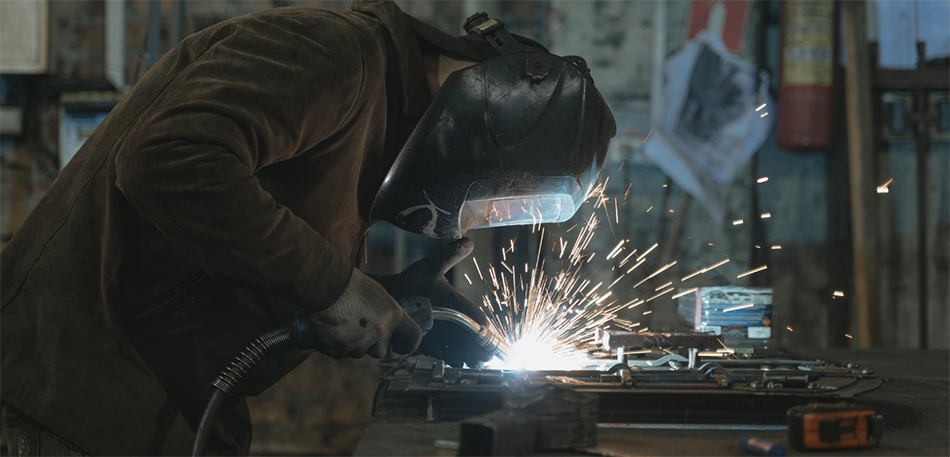
You may be a fan of The History Channel’s Forged in Fire. Blacksmithing is one of the earliest types of metal forming, and the series showcases the delicate balance necessary for forging a perfect blade. The concept used by early blacksmiths hasn’t changed, but the techniques commonly used in metal forming certainly have.
Metal forming is, at its most basic, reworking metal into a different shape. It’s achieved through compression, shearing, tension, or any combination of these three forces. While blacksmiths of old handled molten materials and risked damaging the integrity and strength of the finished product, metal forming technology today doesn’t require the melting process.
Instead of melting metal completely, today’s metal forming techniques are more specific to the metal itself and the desired finished product, with hot working and cold working being two main components of the process. Hot working requires the metal to be heated above its recrystallization temperature, or 60% of the metal’s melting point, while cold working relies on physical energy applied to the metal to bend it.
Metal Forming Manufacturing: Hot Working
Metals worked above recrystallization temperatures are much softer and easier to work with.
This metal forming process is the best choice for large projects that require a lot of reforming. The forces necessary in hot working are far less than those required in cold working, but the trade off may be a rougher finish, and the possibility of lower strength. Hot working metal can also result in less than accurate outcomes because the metal will shrink unevenly.
The blacksmith wielding his hammer at the forge uses a process called hand forging. When power hammers are working the metal instead, it’s referred to as hammer forging. Hot metal can be poured into forms called “dies,” where it will take its new shape as it cools.
Hot working is also used for drawing and extrusion as well.
Hot working is a good choice for some metal forming projects because:
- The physical, mechanical, and chemical properties of the metals can be improved
- It can purify and remove imperfections in the metal
- Defects in the metal can be removed
- It increases ductility
Hot working is done on machines such as hydraulic and mechanical presses.
Metal Forming Manufacturing: Cold Working
Cold Working is forming metals near room temperature, although some heat can be applied to make it easier to work with. Temperatures will never reach the recrystallization point.
Cold working processes require heavier machinery exerting more force on the metal, and may limit how much the metal can be formed. The cold working process is more accurate than hot working, however, and the end product has a better finish and is easier to reproduce. Other advantages include less waste and a shorter production time compared to hot working.
There is no set process for shaping materials using the cold forming process. The finished products are usually created using any combination of:
- Squeezing: cold rolling, cold forging, stamping
- Bending: roll forming, seaming
- Drawing: stretching, embossing, bulging, press brake forming
- Shearing: punching, slitting, perforating, notching
Metal forming using a cold working manufacturing process tends to keep its strength, is more economical, and is more environmentally friendly than hot working.
See EDCO Fabrication’s Metal Forming and Manufacturing Process In Action
EDCO Fabrication has over 60 years of metal forming experience, and we use the best machinery to ensure accuracy in creating our end products. Want to see us in action? Sign up for an in-person tour or take a virtual stroll of the facility to learn more about our manufacturing processes and capabilities.
